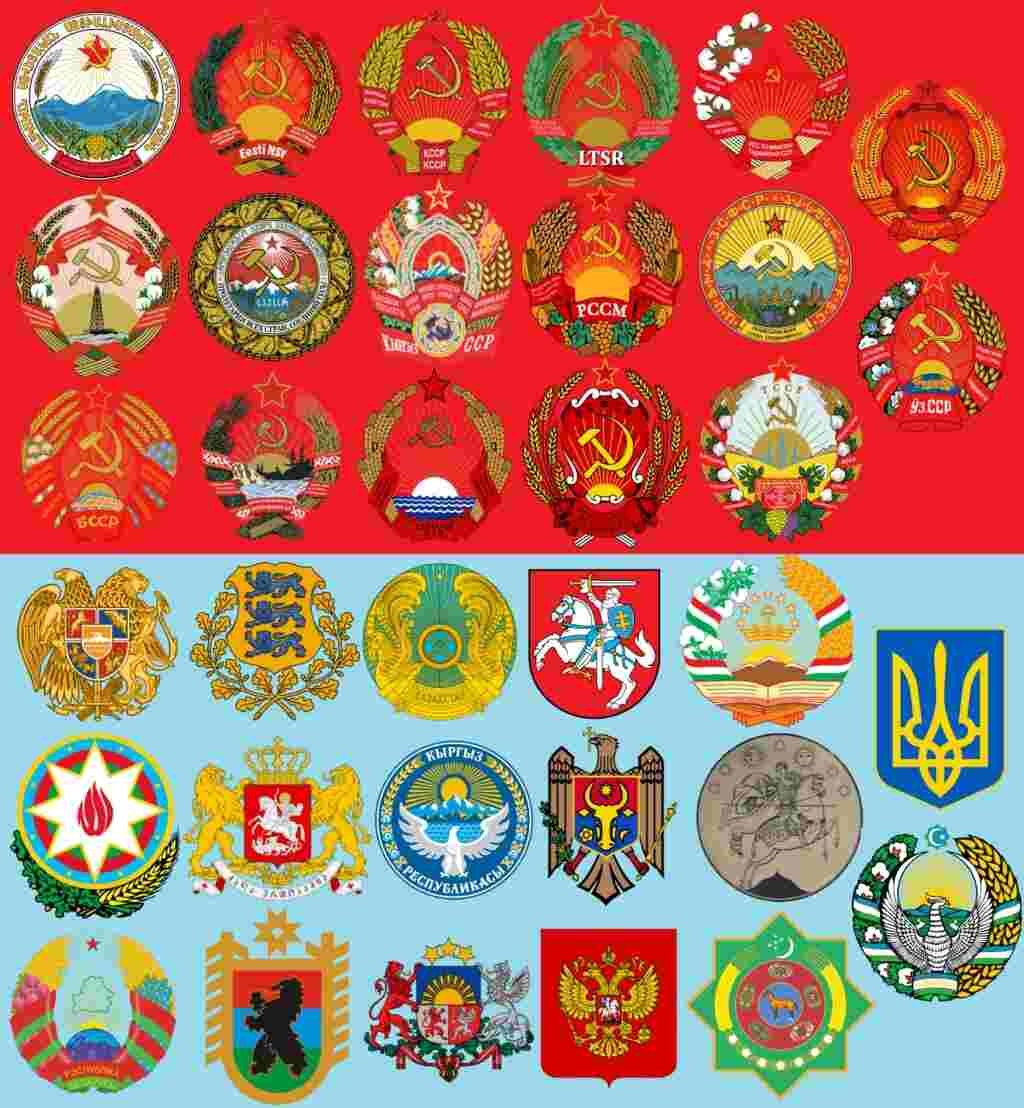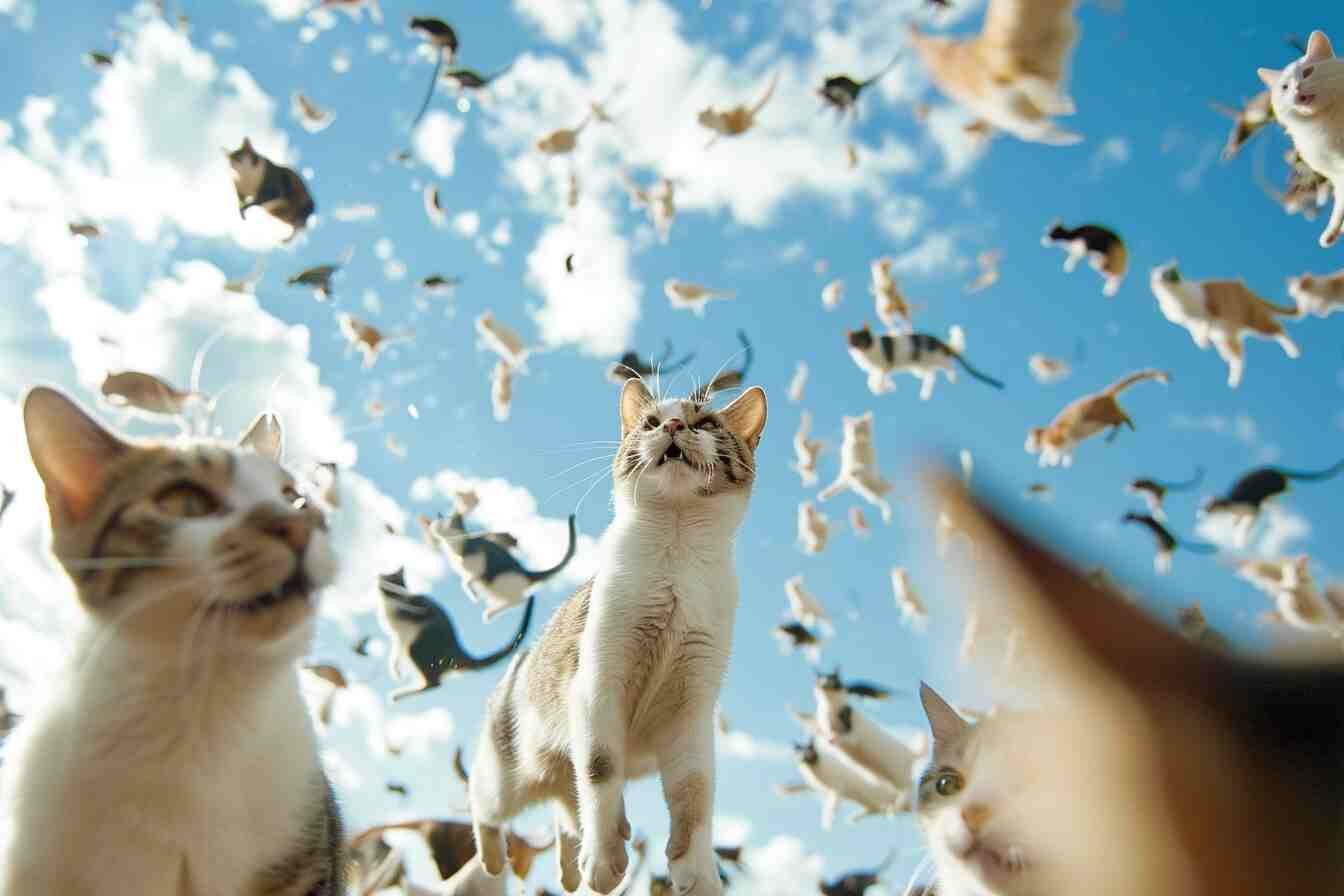How to explain the fall of the USSR on December 26, 1991?
December 25, 2021 marks the 30th anniversary of the dissolution of the Union of Soviet Socialist Republics (USSR). Often reduced to the sole presidency of Mikhail Gorbachev, it is in fact the result of a process of internal political, economic and ethnic disintegration. Fall of the USSR has its roots in a multitude of phenomena, which span decades.
“The term “fall” “Dissolution”, “dislocation”, “burst”, “collapse” of the USSR, which we use very often, raises questions: it gives the impression of something accidental, which would have happened almost inadvertently, like how we stumble or triped over something. While the collapse of the USSR has its roots in a multitude of phenomena, which span decades.
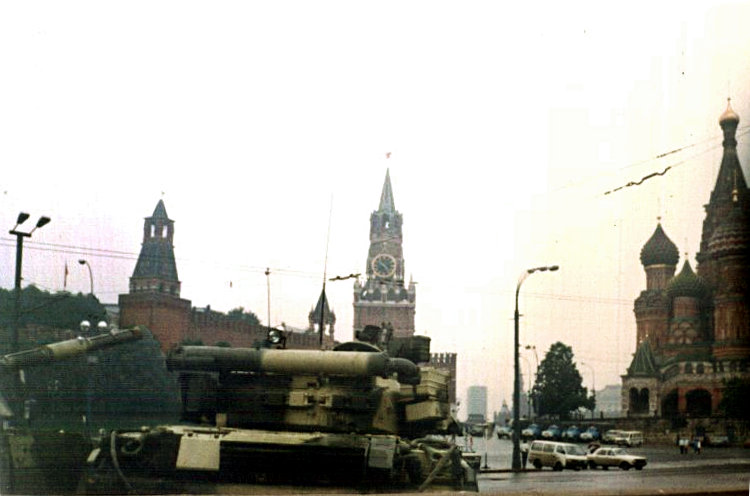
T-80UD tanks in the Red square during the 1991 Soviet coup d’etat attempt. Location: Northern ramp of Bolshoy Moskvoretsky Bridge (not exactly Red Square, some 200 meters south from its formal southern edge, with Nabatnaya tower in sight). Almog, Public domain, via Wikimedia Commons
Economy crisis
The collapse of the economy is the main problem of the Soviet Union. The country had a centrally planned economy, as opposed to the market economies of most other countries.
In the USSR, the state decided how much of each thing to produce (how many cars, how many pairs of shoes or how many loaves of bread).
USSR also decided the quantity of these products each citizen needed, their cost and their remuneration.
The theory was that this system was efficient and fair, but in reality it struggled to work.
Supply always lags and demand was high and money is often meaningless. The greater the money supply in circulation in an economy, the more prices rise as a result of a depreciation in the value of the currency.
Many people in the Soviet Union weren’t really poor, but they just couldn’t afford the basics, because there were never enough of them. To buy a car, you had to be on a waiting list for years. To buy a coat or a pair of winter boots, you often had to queue for hours, only to find that your size was already sold out.
In the Soviet Union, we did not speak of buying something (kupit), but of obtaining it (dostat).
What made the situation worse was spending on space exploration and the arms race between the Soviet Union and the United States, which began in the late 1950s.
The USSR was the first country in the world to send a man into orbit and it had a very advanced arsenal of nuclear weapons and ballistic missiles, but it was all very expensive.
The Soviet Union relied on its natural resources, such as oil and gas, to pay for this run, but in the early 1980s oil prices crashed, hitting the already faltering economy hard.
Gorbachev’s Perestroika policy introduced some market principles, but the gigantic Soviet economy was too heavy to be reformed quickly.
Consumer goods remain scarce and inflation is soaring.
In 1990, the authorities introduced a monetary reform that wiped out the savings, meager though they were, of millions of people. Frustration with the government is growing.
A crisis of real socialism
Thirty years later, historians continue to agonize over the beginning of the end of the USSR. Some even argue that from its birth, this political project carried the seeds of its own end. From the end of the 1970s, and even more obviously in the 1980s, we felt that the ideological foundations of the Soviet Union were already beginning to crumble. Even in the upper echelons of the state, people then began to doubt the advent of the future communist party, its feasibility as a political project – the purpose of which, schematically, would be the universal abolition of private property.
Until then, the socialist regimes set up in the USSR were indeed presented as a simple step towards this universal communism. But gradually, the discourse on the accomplishment of communism is changing, says the researcher. The promise of its imminent advent almost disappears from political discourse, which therefore focuses on the problems of the present. And socialism, losing sight of its objective, enters into crisis.
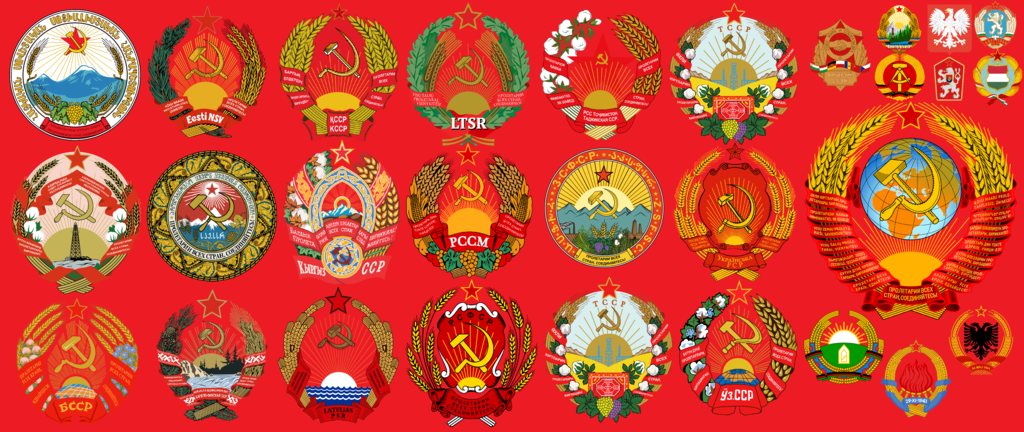
Shown here is the emblems of the SSR of the Uni Soviet, including former republics (Transcaucasian SFSR and Karelo Finnish SSR). There are also the satellite states of USSR, and the emblem of the Warsaw Pact. Respublika Narodnaya, CC BY-SA 4.0, via Wikimedia Commons
A crisis of nationalities
To this political crisis was added during the 1980s an economic crisis, and a crisis of the national question in the USSR, a fragmented nation if ever there was one. A crisis which, spreading like wildfire in the Caucasian republics, successively inflamed Georgia in 1978, Armenia in 1988 with the autonomous region of Nagorno-Karabakh, Azerbaijan in 1990, and finally in Chechnya, which demanded its independence on the eve of the break-up of the Soviet Union in 1991.
With these conflicts which are multiplying on the margins of the USSR, reflections on the relevance of borders are also multiplying. All these nations were created to correspond to pre-established models. However, the USSR being a multi-ethnic nation, this situation inevitably led to conflicts that were difficult to manage.
The Chernobyl nuclear disaster on April 26, 1986
Finally, the environmental crisis of the century occurs: the Chernobyl nuclear disaster on April 26, 1986. The incident sheds harsh light on the negligence of the Soviet system, whose scientific and security weaknesses are pointed out. More deeply, it calls into question the effectiveness of the State in taking care of nature, which is a central theme in Soviet doxa since it is supposed to reflect the harmony of peoples.
The tragedy of Chernobyl, a symbol of Soviet power, calls into question its mastery of territory and nature. It therefore causes a structural crisis.
Chernobyl (Ukraine) History and Disaster of Nuclear Contamination
Gorbachev, the coup de grace (KUDETA) on March 11, 1985
When Mikhail Gorbachev was elected head of the Soviet Party on March 11, 1985, he was well aware of this internal ferment, and of the impasse in which Soviet socialism found itself. In a final attempt to end all these simultaneous crises, he decided to restructure the country in its triple political, economic and social dimension.
“He does not want to abandon the communist project, on the contrary. Gorbachev wants to propose another path for communism, returning to its Leninist foundations. He then launched his two radical policies of perestroika (restructuring) and glasnost (transparency). In doing so, he allows Soviet citizens to reclaim their territory and their history, of which the dictatorship had deprived them. By putting an end to censorship, Gorbachev opens a breach into which intellectuals and artists rush, and finally allows citizens to resume their role in society. “It is an extremely strong moment in the history of the country, but which leads to a complete questioning of the Soviet narrative. And there, everything cracks.”
After the fall of the Berlin Wall on November 9, 1989, socialist regimes collapsed one after another in Eastern Europe. Gorbachev put an end to the Soviet dream on December 25, 1991, announcing his resignation live on Russian television.
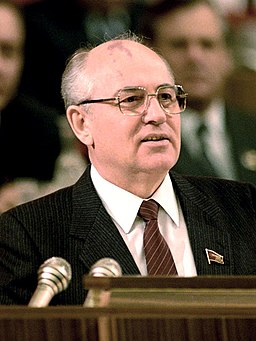
Gorbachev in 1987. General Secretary of the CPSU CC M. Gorbachev”. General Secretary of the CPSU Central Committee Mikhail Gorbachev speaking at the 20th Congress of the VLKSM. Kremlin Palace of Congresses. RIA Novosti archive, image #850809 / Vladimir Vyatkin / CC-BY-SA 3.0, CC BY-SA 3.0, via Wikimedia Commons
But then only the USSR died as a sovereign state, because as a culture, it is still omnipresent in Russia. “Countless material traces of the USSR can still be found throughout Russia,” explains the researcher, whose next book will focus on the history of Soviet heritage in Russia. The public space is saturated with Soviet elements. There are more than 6,000 statues of Lenin left in Russia! Not to mention the sickles and hammers on public buildings, the inscriptions on manhole covers, but also architecture, or even town planning… All of this is more or less preserved, restored or enhanced, when not not abandoned, transformed or destroyed. After all, it has only been 30 years since the USSR ceased to exist”.
Sources: PinterPandai, Britannica, History, Bloomberg
Photo credit (main picture): Respublika Narodnaya (CC BY-SA 4.0) via Wikimedia Commons
Photo description: country emblems of the Soviet Republics before and after the dissolution of the Soviet Union (note that the Transcaucasian Soviet Federative Socialist Republic (fifth in the second row) no longer exists as a political entity of any kind and the emblem is unofficial).
